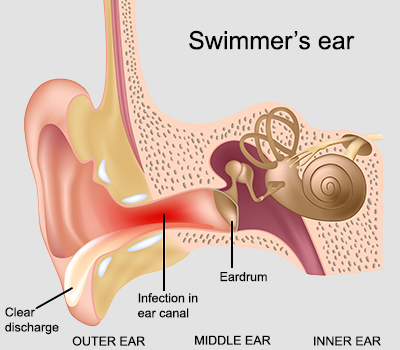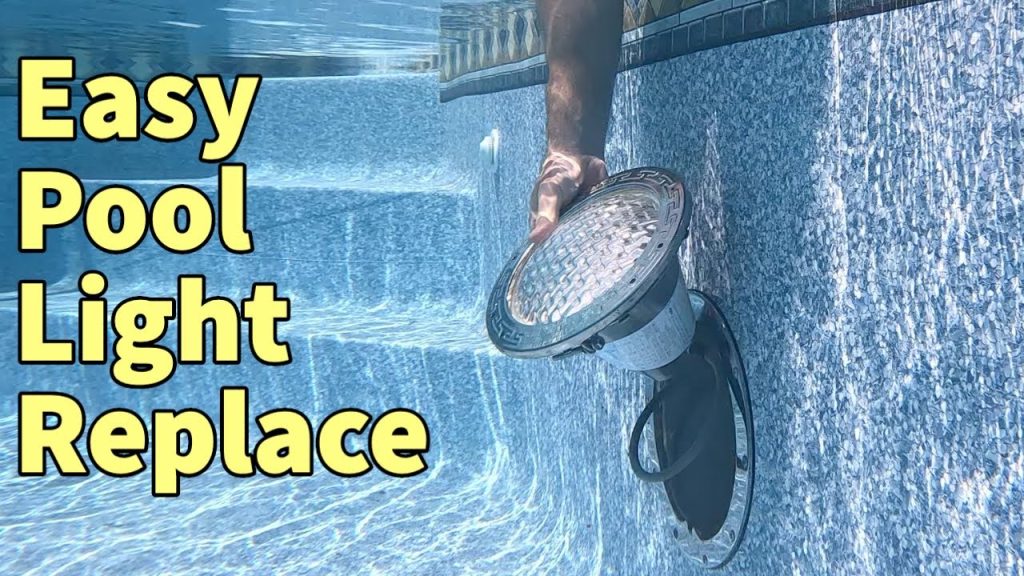To check swimming pool conditioner chemicals, follow these steps: test the water, interpret the results, and adjust as needed. Proper maintenance keeps your pool safe and enjoyable.
Swimming pools require regular care to stay clean and safe. Conditioner, or stabilizer, is a key chemical that protects chlorine from the sun. Without it, chlorine evaporates quickly, and the pool can become contaminated. Regularly checking and adjusting conditioner levels ensures effective sanitation.
This guide will explain how to test and maintain the right levels of pool conditioner. Whether you’re a new pool owner or looking to improve your maintenance routine, understanding these steps is crucial. Keep your pool sparkling and safe with proper conditioner management. Let’s dive into the details.

Credit: villagespapools.com
Importance Of Pool Conditioner
A swimming pool is a great place to relax and have fun. But, keeping it clean is essential. One important chemical to monitor is the pool conditioner. Pool conditioner, also known as cyanuric acid, protects the pool’s chlorine from the sun. This helps maintain clean and safe water.
Role In Pool Maintenance
Pool conditioner plays a big role in maintaining your pool. It stabilizes chlorine levels, preventing them from breaking down too fast. Without it, you might need to add chlorine more often. This can be costly and time-consuming. By using the right amount of pool conditioner, you ensure your pool stays clean with less effort.
Benefits Of Proper Levels
Keeping the correct levels of pool conditioner has many benefits. Here are some of the main advantages:
- Extended chlorine life: Protects chlorine from UV rays, making it last longer.
- Cost-effective: Reduces the need to buy and add chlorine often.
- Enhanced water quality: Helps maintain balanced water, which is safe for swimmers.
Using a pool conditioner is key to a well-maintained pool. Regular testing and adjusting ensure you enjoy your pool without worries.
Essential Pool Chemicals
Maintaining a swimming pool requires knowledge of various chemicals. These chemicals ensure the water stays clean and safe for swimmers. Understanding their types and functions can help you keep your pool in top shape.
Types Of Pool Chemicals
There are several types of pool chemicals. Here are the main ones:
- Chlorine
- Bromine
- pH Balancers
- Algaecides
- Cyanuric Acid
- Clarifiers
- Shock Treatments
Functions Of Each Chemical
Each pool chemical has a specific function. Here’s what they do:
| Chemical | Function |
|---|---|
| Chlorine | Kills bacteria and keeps water clear. |
| Bromine | Alternative to chlorine, ideal for hot tubs. |
| pH Balancers | Maintain proper water pH levels. |
| Algaecides | Prevent and kill algae. |
| Cyanuric Acid | Protects chlorine from sunlight. |
| Clarifiers | Clear cloudy water by clumping particles. |
| Shock Treatments | Boost chlorine levels for deep cleaning. |
Tools For Testing
Checking swimming pool conditioner chemicals is crucial for maintaining water quality. Using the right tools ensures accurate readings. This helps keep your pool safe and enjoyable. There are several tools available for testing pool chemicals.
Testing Kits
Testing kits are a popular choice. They come with color-coded strips. These strips react to pool water. Simply dip the strip in the pool. Wait a few seconds. Compare the colors to a chart. This chart is included in the kit. Testing kits are affordable. They are easy to use.
Digital Testing Devices
Digital testing devices offer more precision. They are user-friendly. These devices display readings on a screen. You can measure different chemicals. This includes chlorine, pH levels, and more. Just take a water sample. Insert it into the device. Wait for the digital readout. Digital testers are accurate. They save time.
Steps To Test Pool Conditioner
Maintaining the right balance of chemicals in your swimming pool is crucial for ensuring clean and safe water. One key component to check is the pool conditioner, also known as cyanuric acid. This helps stabilize chlorine levels in your pool. Follow these simple steps to test your pool conditioner levels effectively.
Preparation
Before you start, gather all necessary materials. You will need:
- Test kit or test strips
- Clean container for water samples
- Protective gloves
- Notebook to record results
Make sure your test kit is designed to measure cyanuric acid. Wear protective gloves to avoid skin contact with pool water and chemicals.
Sample Collection
Collect a water sample from your pool. Follow these steps:
- Dip the clean container into the pool, about elbow-deep.
- Fill the container with water from the middle of the pool, not near the edges.
- Bring the water sample to a shady area to avoid direct sunlight during testing.
Performing The Test
Use your test kit or test strips to check the pool conditioner levels:
- Follow the instructions on your test kit or strips.
- Place the test strip in the water sample or add the reagent to the sample.
- Wait for the time specified in the instructions.
- Compare the test results to the color chart provided with your kit.
Record your results in the notebook. Ideal cyanuric acid levels should be between 30-50 ppm (parts per million). If levels are too low or too high, adjust your pool chemicals accordingly.
Testing your pool conditioner regularly ensures a safe and enjoyable swimming experience. Keeping a log of your test results helps track changes and maintain optimal water quality.
Interpreting Test Results
Maintaining the right chemical balance in your swimming pool is crucial. Testing your pool’s conditioner levels is a key step. But understanding the results can be tricky. This guide will help you interpret your test results with ease.
Ideal Conditioner Levels
Keeping conditioner levels in check ensures your pool stays clean and safe. The ideal range for conditioner (cyanuric acid) is between 30 and 50 ppm (parts per million).
- Less than 30 ppm: Your pool is under-protected from UV rays.
- More than 50 ppm: Your pool may become cloudy or over-stabilized.
Use a reliable pool test kit to measure these levels accurately.
Common Issues And Solutions
Several issues can arise if conditioner levels are not maintained.
| Issue | Cause | Solution |
|---|---|---|
| Low conditioner levels | High evaporation or splash-out | Add conditioner to reach the ideal range |
| High conditioner levels | Overuse of stabilized chlorine products | Partially drain and refill the pool |
- Low levels: Add a conditioner product to your pool.
- High levels: Partially drain and refill your pool.
Regularly test your pool to keep issues at bay.
_Pool_water_chemistry_101.png)
Credit: www.baracuda.com.au
Adjusting Pool Conditioner Levels
Maintaining the right levels of pool conditioner is essential. It helps protect your pool from harmful UV rays. Too little conditioner means chlorine evaporates quickly. Too much can cause problems too. Let’s learn how to manage these levels effectively.
Adding Conditioner
If your pool conditioner levels are low, you need to add more. First, test the water with a pool test kit. Check the current conditioner levels. They should be between 30-50 ppm (parts per million). If the level is below this range, add the required amount of conditioner.
To add conditioner, measure the needed amount. Follow the instructions on the product label. Distribute the conditioner evenly around the pool. Use the pool pump to circulate the water. This helps distribute the conditioner well. Retest the water after 24 hours. Ensure the levels are now within the ideal range.
Reducing Excess Conditioner
Too much conditioner can also be an issue. High levels can make the water cloudy. It can also reduce chlorine effectiveness. To reduce excess conditioner, partially drain the pool. Remove a portion of the water. Refill with fresh water. This dilutes the conditioner levels.
Retest the water after refilling. If levels are still high, repeat the process. Ensure you test the water regularly. Keeping conditioner levels balanced is key to a healthy pool. It saves you time and effort in the long run.
Maintaining Balanced Pool Chemistry
Maintaining balanced pool chemistry is crucial for a safe swimming experience. Proper chemical levels ensure the water stays clean and clear. It also prevents damage to the pool and equipment. One key aspect of pool chemistry is the conditioner or stabilizer levels. This section will cover how to check these chemicals regularly and adjust them according to the season.
Regular Testing Schedule
Regular testing keeps your pool chemistry in check. Test the water at least once a week. Use a reliable test kit to measure chlorine, pH, and conditioner levels. Record your results to track changes over time.
Adjust the chemicals based on your test results. If the conditioner level is too low, add more stabilizer. If it’s too high, dilute the pool water. Consistent testing helps maintain balanced chemistry, ensuring a safe swimming environment.
Seasonal Adjustments
Pool chemistry can change with the seasons. Warmer weather increases the need for stabilizers. Sunlight breaks down chlorine faster, requiring more conditioner to protect it. During summer, test the pool more frequently.
In cooler months, the need for stabilizers decreases. Test the water less often but still keep an eye on chemical levels. Adjust the conditioner accordingly to maintain balance. Seasonal adjustments help keep your pool in top condition all year round.
Common Mistakes To Avoid
Maintaining the right balance of chemicals in your swimming pool is crucial. But, many pool owners make common mistakes that can lead to problems. Understanding these mistakes helps you keep your pool safe and clean.
Overuse Of Chemicals
Many pool owners think more chemicals mean a cleaner pool. This is not true. Overusing chemicals can cause skin irritation and other health issues. It can also damage your pool equipment. Always follow the recommended dosage for each chemical.
Check the chemical levels regularly. Use a reliable pool test kit. This helps ensure you are not adding too much of any one chemical. Remember, balance is key.
Neglecting Regular Tests
Regular testing of your pool water is essential. Neglecting this can lead to imbalanced chemicals. This can cause cloudy water or algae growth. It can also make swimming unsafe.
Test your pool water at least once a week. Record the results. This helps you track the chemical levels over time. It also helps you make informed decisions on what chemicals to add.
Regular tests are easy and quick. Make it a part of your routine. Your pool and your health depend on it.

Credit: www.amazon.com
Frequently Asked Questions
What Is Swimming Pool Conditioner?
Swimming pool conditioner, also known as stabilizer or cyanuric acid, helps maintain chlorine levels. It prevents chlorine degradation by sunlight. Proper conditioner levels ensure effective sanitation.
How Often Should You Check Pool Conditioner?
Check your pool conditioner levels every month. Regular checks help maintain optimal chlorine efficiency. Adjust levels as needed to ensure a safe swimming environment.
What Are Ideal Conditioner Levels?
Ideal pool conditioner levels range from 30 to 50 ppm. Levels below 30 can cause rapid chlorine loss. Levels above 50 may reduce chlorine effectiveness.
How Do You Test Pool Conditioner?
Use a pool water testing kit to measure conditioner levels. Follow the kit instructions for accurate results. Adjust levels based on the test findings.
Conclusion
Ensuring the right chemical balance in your pool is crucial. Regularly check and adjust conditioner levels to maintain water quality. This prevents issues like algae growth and keeps swimmers safe. Use testing kits to monitor the levels easily. Remember, balanced water means a healthier, more enjoyable pool experience.
Stay consistent with your checks for the best results. Happy swimming!



